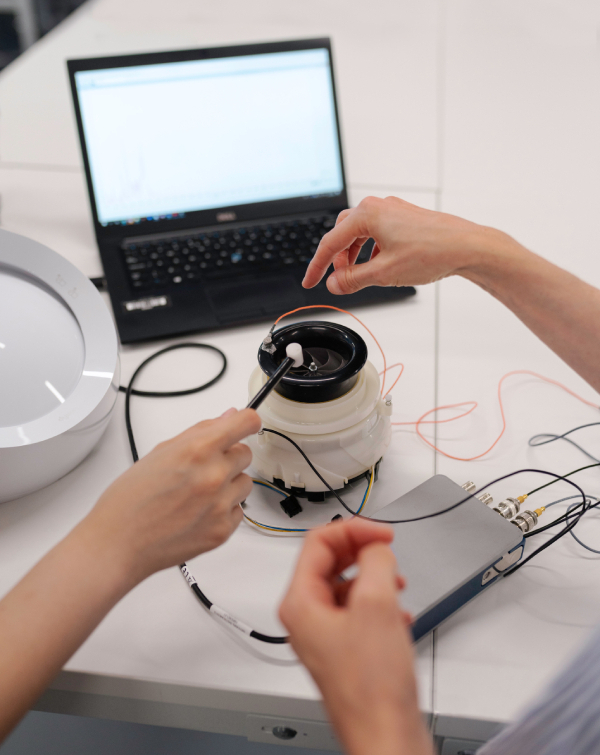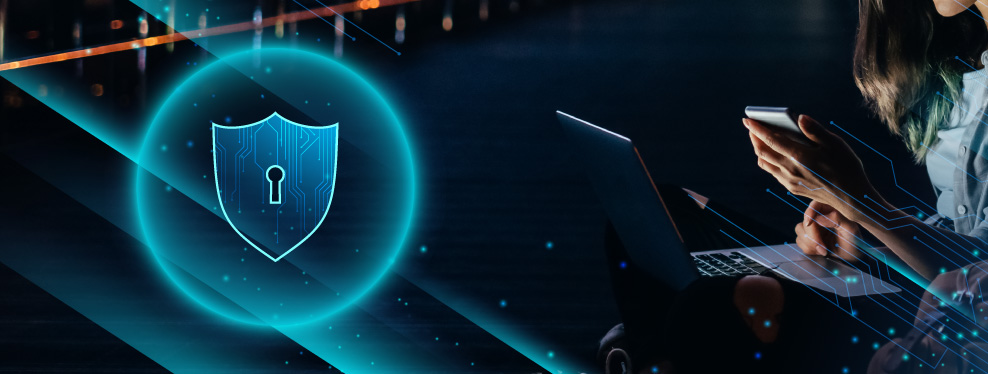According to Harvard Business School professor Clayton Christensen, there are over 30,000 new products introduced every year, and 95 percent fail.
Product testing enables businesses to gauge consumer interest and receive feedback on areas that need improvement. It enables the understanding of consumer preferences and drivers that will determine if the product will succeed. It allows for the collection of data that will enable the product to be improved, to maintain, and expand its market share.
The Importance of Product Testing
The goal of product testing is to determine which aspects of a product or device generate the most favorable or unfavorable attention, which elements make the product easier or harder to use, and what the resulting consumer sentiment will be surrounding the product. This type of research is vital to product innovation and development as it minimizes the risk of wasting valuable time and marketing dollars by focusing efforts and resources in the right direction, increasing the chances for success.
While every attribute that matters cannot be documented and measured, it is important to catalogue the ones that stand the test of time; the attributes that are most valued by consumers, and the quality of the user experience. It is here where products will fail or succeed. Doing a job-that-needs-done, and the ability to do it with a minimum amount of effort is most important – all things being equal, consumers prefer a superior user experience.
“Designed in California” was a commercial produced by Apple half a dozen years ago, and it poses several universal questions that relate to the value of product design: “This is what matters – The experience of a product: How it will make someone feel. Will it make life better? Does it deserve to exist?” These are important questions. Sadly, these messages, and the resulting product testing, is too often neglected, in the drive to get to market.
Product testing results are better when the testing is designed and executed by professionals experienced in the field. There are multiple challenges that research teams encounter during product testing. These can include figuring out the most effective approach to use to perform the testing, creating a template for testing each of the product’s features or usability, and determining which findings need to be prioritized. It is also essential to assure there is ample time to actually do the testing, followed by an allowance of time to summarize and report findings, and the timeline necessary for any product modifications.
Failing to pay attention to any of these touchpoints may lead to both quality issues and dissatisfied consumers, leading to long term consequences for product success. Unfortunately, failure to follow them is frequent, and that tells us why 95 percent of products fail. Experienced researchers know to not avoid these critical steps.
A Global Pandemic Generates Challenges
In the midst of a global pandemic, conducting product testing has become complicated. How do researchers get people to assemble in a physical location? Must they wear masks or be seated behind plexiglass? Do social distancing protocols compromise the validity of the testing? Is it even possible to convene a group of individuals in a fixed space, even if they are willing to do so?
These are important questions. But if product designers and marketers want to make it through the gauntlet of the five percent of products that are likely to succeed, they can’t eliminate testing. So how is it possible today to test? Fortunately, there are some best practices to help guide you in these challenges:
Five Steps to Successful Product Testing Right Now
1.) Make Peace with the Current Environment and Embrace the New Normal
Most companies prefer to conduct their product testing in a central location to maintain a controlled environment. Indeed, many companies are embracing a strategy of ‘waiting it out’ for a vaccine to materialize, for COVID-19 to dissipate, for governments to miraculously declare it’s time for enhanced openness – in short, for the uncertainty to go away, and for life to return to ‘normal.’
This is going to take a while. “Even when the vaccine is available it doesn’t mean within a month everybody is going to be vaccinated, we’re talking about six months, nine months… a year,” said Prof Nilay Shah, head of chemical engineering at Imperial College London. “There’s not a question of life suddenly returning to normal in March.”
Very likely, companies will have to move on and get product testing research done. Already this is happening, and being done successfully. There’s no need to wait and get left behind over fear of the unknown. “Your most important work is always ahead of you, never behind you,” said Stephen Covey. That applies to getting the answers that are produced through product testing.
2.) Realize That Virtual Tools Are Going to Need to Play A Role in Testing
With advances in focus group technology, the hybrid model is now possible. With social distancing in place, many researchers are opting for a hybrid setup where a select number of in-person participants are in a central location and research stakeholders observe remotely. Hybrid sessions can even be led by a moderator who is offsite from the testing center. It is critical to use a video recording and streaming solution that can enable effective data gathering.
This is a practical solution in the New Normal. Respondents that participate in live focus groups typically travel a relatively short distance to the facility location. They don’t usually have to get on airplanes to be part of the group. Clients and researchers, on the other hand, typically do need to fly to the site of the research. By using a tool that combines both the in-person respondent group and a remote moderator, with the ability to include remote observers, it is possible to still conduct product testing today.
3.) Choose the Virtual Tools That Are Technically Capable of Meeting Your Goals
It has been established that the capability of the technology used in a hybrid scenario must accommodate the ability for clients to observe remotely, as well as for even the group moderator to be off-site from the respondents during the product testing. The key here is the ability to observe each respondent up close and personal – both their faces and hands as they test the product or device – and to be able to clearly view their facial expressions, hand gestures, or body language, and how they handle the product or device while also clearly hearing their verbal reactions.
How this can be done is achieved through using a focus group technology that allows for close up observation, and that can be directed to an up-close view of the product or device as it is handled, and which also provides crystal clear audio. It is an added bonus if the virtual tool can ‘stitch’ together the respondents so that they appear to be seated in close proximity even when seated six feet apart. With this type of virtual focus group technology, remote viewers see the most recent three speakers at the same time, while also seeing a panoramic view of the entire group. The streaming media recording will also reflect this view, which will be helpful later in the analysis phase.
It is also important for the technology to work with social distancing requirements in place, where participants may be wearing masks or sitting behind plexiglass. Otherwise, low-quality visual images and audio video output will compromise the data and thus compromise the quality of the research and, potentially product development.
4.) Choose the Right Location for Testing
Assuming you are going to engage in either a fully live in-person group, or use the hybrid model described above, where you place the live focus group testing is critical. Is your preferred facility location open right now? Has the facility taken seriously the need for adjustments in how it hosts groups? What social distancing protocols do they have in place? The best facilities are able to immediately tell you the steps they have taken, and even, indeed, show you, via a video on their website, or visuals of their in-house changes.
Look for rooms that can allow for individual tables for each respondent, or plexiglass barriers between people set up in larger groups. Choose a facility location that has made an investment in today’s reality, rather than one that is hoping for a quick end to the current recommended restrictions. Follow the same thinking that you would use when personally going to any public space right now, and consider capacity guidelines that are in place for locations of group assembly, such as restaurants, museums, and other venues, that can be models for spaces that hold in-person focus groups.
5.) Choose A Provider Capable of Excellent Technical Support
Research is demanding enough without complicating your situation by trying to be a virtual event tech guru during the process. Hire only a service that has a reputation for understanding technology, has the ability to troubleshoot issues with respondents, has the goals of the moderator in mind, is focused on the moderator’s success during the group process, and who understands the importance of supporting the moderator’s goals with the clients who are paying for the research.
This is not the time to try to take this on by yourself. Nor is it the time to experiment with unproven resources, or to engage with an organization that provides only technology but not help. Make sure you are putting your important product testing focus groups into the hands of experienced technical professionals who care about your outcome, and who will be there for you behind the scenes before, throughout, and after.
The Time for Product Testing Is Now
It’s clear that failure to test can lead directly to the failure of products. But the good news is the five clear steps to successful product testing right now can get you through the transition you need to make, and get you started on the right path to product success.
Don’t look back to past methodologies unless you are planning to walk in that direction; instead, look forward.
If you want to talk about moving forward with product or device testing, or any other type of in-person research that is now possible again by using the latest focus group technology, please reach out to us at contact@ccamfocus.com – we can share more about what is possible. It’s a brave new research world. Looking ahead creates opportunities.
Originally seen on Greenbook.org.


